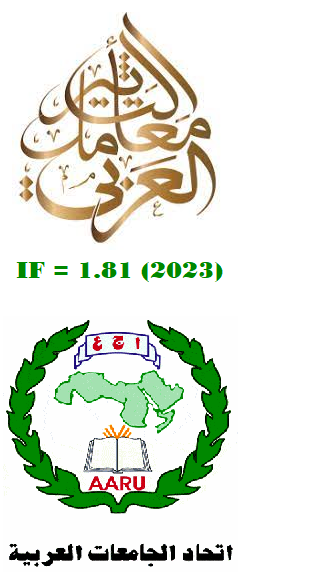Figuring out the Varieties in Reporting News with an Eye on Translation and Semiotics
Abstract
Although most of the people focus on the written message and forget about other non-verbal messages, some researchers keep looking for other signal that might send some messages but are stronger enough to affect the readers. This research is an attempt to figure out the size of the blackout that we experience in the world concerning reporting news. The reasons behind such vagueness are the factors encompassed in delivering the news like the translator’s viewpoint and signs translation. The semiotic approach has been used to shed light on these elements and to raise the attention of readers before taking every little news guaranteed.
Downloads
References
AlAnsary,Sameh (n.d.) “Interlingua-based Machine Translation Systems: UNL versus Other Interlinguas”. In Bibliotheca Alexandrina, ElShatby, Alexandria, Egypt.
Abalhassan,K. M. & Alshalawi, H.G.(2000).” Code-switching Behavior of Arab Speakers of English as a Second Language in the United States”. In Intercultural Communication Studies X: 1
De Saussure, F. (1965) Course in general linguistics, W. Baskin (transl.), New York, NY: McGraw-Hill.
Diniz, T. F. N. (n.d.). “A New approach to the study of translation: from stage to screen1”. Retrieved from https://www.google.iq/?gws_rd=cr#q=thais+flores+nogueira+diniz-semiotics .
Gorlée, Dinda L. (1994). Semiotics and the Problem of Translation: With Special Reference to the Semiotics of Charles Peirce. London: Routledge.
Gumpertz,J.(1996).”Introduction to part IV”. In J. Gumpertz & S.Levinson(ed),Rethinking Linguistic Relativity, Cambridge University Press,359-373
Kourdis, E. (2007). “Traduction interlinguale et intersémiotique dans un message publicitaire grec: rapports entre les messages verbaux et les systèmes non verbaux”. In 9ème Congrès Mondial de Sémiologie Compréhension/ Mécompréhension, Helsinki, 11-17/6/2007 (proceedings forthcoming).
Peirce, C.S. (1931-1935) Collected papers of Charles Sanders Peirce, Vols. I-VI, Charles Hartshorne and Paul Weiss (eds.), Cambridge, MA: Harvard University Press.
Petrilli,S.(n.d). “ The semiotic machine, linguistic work, and translation* ". Retrieved from http://www.susanpetrilli.com/PDF/The%20semiotic%20machine.pdf.
Petrilli,S.(2013). “Translation, Semiotics and Ideology". In TTR: traduction, terminologie, rédaction, vol. 5, n° 1, p. 233-264.
Torop,P. (2008). “Translation and Semiotics”. In “Sign Systems Studies” Vol. 36 No. 2.
Welby, V. (1902). "Translation," in Dictionary of Philosophy and Psychology of Language in Three Volumes. J. M. Baldwin, ed. London, Macmillan.
Copyright (c) 2019 Huda Y. Abdulwahid

This work is licensed under a Creative Commons Attribution-NonCommercial-NoDerivatives 4.0 International License.
Authors who publish with this journal agree to the following terms:
1. Authors retain copyright and grant the journal right of first publication with the work simultaneously licensed under a Creative Commons Attribution License [CC BY-NC-ND 4.0] that allows others to share the work with an acknowledgment of the work's authorship and initial publication in this journal.
2. Authors are able to enter into separate, additional contractual arrangements for the non-exclusive distribution of the journal's published version of the work (e.g., post it to an institutional repository or publish it in a book), with an acknowledgment of its initial publication in this journal.
3. Authors are permitted and encouraged to post their work online (e.g., in institutional repositories or on their website) prior to and during the submission process, as it can lead to productive exchanges, as well as earlier and greater citation of published work (See The Effect of Open Access).









